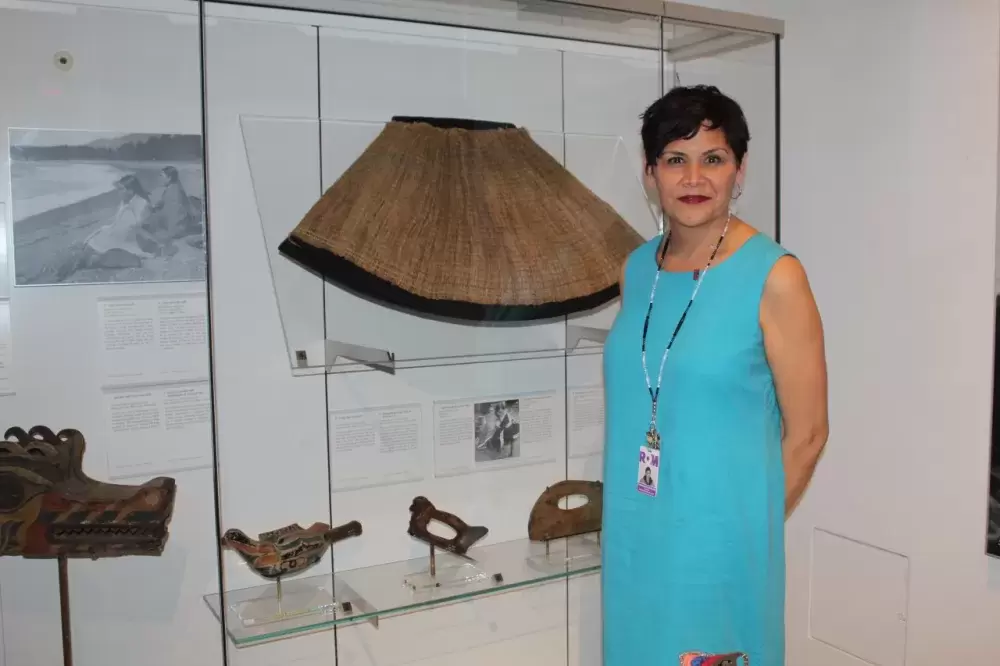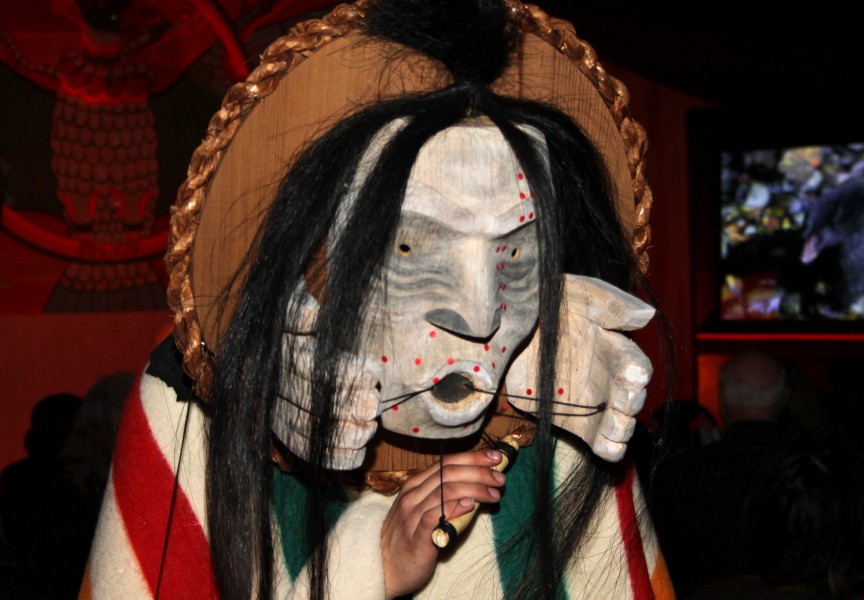J’net Ayayqwayaksheelth is doing her part to promote indigenous history in Canada’s largest museum.
The Ahousaht First Nation member, who moved to Toronto a decade ago, has a rather impressive platform these days to spread her praises.
For the past four years Ayayqwayaksheelth has worked as the Indigenous Outreach and Learning Co-ordinator for the renowned Royal Ontario Museum (ROM) in Toronto, one of North America’s largest museums.
Though she’s been a ROM employee for a number of years, her position became a permanent one this past July.
Before moving to Toronto Ayayqwayaksheelth had furthered the cause of indigenous people in various ways, including working as a TV host, doing some radio work and serving as a counsellor.
ROM officials are also keen to promote indigenous voices. And they have a desire to do their part towards the current reconciliation movement. To this end, the museum will soon be doubling its number of indigenous knowledge teachers. The museum currently employs three. That number will be bumped up to six as ROM reps completed interviews in early February.
“It shows ROM’s commitment to systemic change to this environment,” Ayayqwayaksheelth said.
The ROM, a one-million-square-foot facility, however, already is a big booster of indigenous history. A popular gallery at the museum, which annually attracts more than one million visitors, is the Daphne Cockwell Gallery of Canada: First Peoples. This gallery features more than 1,000 artifacts and displays both social and economic forces that have influenced indigenous art and culture.
While she’s at work, Ayayqwayaksheelth doesn’t have to venture that far from her office to view the Nuu-chah-nulth collection, situated in a corner of the gallery. This collection currently has eight artifacts on display, including her favourite piece, a cedar bark cape, which is worn over the shoulders. This cape is believed to be from either the late 19th century or the early 20th century. Other ancestral objects in the Nuu-chah-nulth collection include a wolf headdress, a bark shredder and a sea bird rattle.
Ayayqwayaksheelth said ROM’s strong Indigenous interest was evident during its recent exhibition titled Anishinaabeg: Art & Power. This exhibit, part of the Canada 150 celebrations, was at the ROM from mid-June until mid-November.
“That was a very significant exhibition for the ROM because it was a correlation between one of our curators, Arnie Brownstone, and two prominent indigenous people,” Ayayqwayaksheelth said.
Brownstone is ROM’s specialist on cultures of the North American Great Plains. The others who assisted with the exhibit’s development were Saul Williams and Alan Corbiere. Williams, who is from northern Ontario’s North Caribou Lake First Nation, is a painter while Corbiere, who is from Ontario’s M’Chigeeng First Nation on Manitoulin Island, is a historian.
“It was important for the exhibit that we had indigenous members who could lead that tour from an indigenous perspective,” she said.
Ayayqwayaksheelth believes having more indigenous knowledge teachers will now give the ROM even more credibility by having indigenous people leading museum tours for school groups. The museum currently annually hosts a pair of indigenous-themed events, targeting students in Grades 4-8. Each November the Toronto District School Board celebrates its Indigenous Education Month. The ROM hosts several bookings from various schools during this month. The ROM also hosts school groups each June, during National Aboriginal Heritage Month.
While the majority of those students who have visited the ROM during these two special events are from Grade 8 or lower, museum officials will continue to also add some high school classes to these sessions.
Ayayqwayaksheelth, a cancer survivor, is hoping to continue in her current position for quite some time.
She was diagnosed with an aggressive form of breast cancer in August of 2016. She has since been treated and has been cancer free since last June.
Ayayqwayaksheelth said a Nuu-chah-nulth member Tom Curley indirectly helped her through her cancer journey. She recalled how she had heard Curley speak on a webcast of the Truth and Reconciliation Commission.
Curley’s words of how the day belonged to him stuck with Ayayqwaaksheelth and inspired her throughout her days of fighting cancer.
“It gave me hope,” she said. “The cancer journey has given me a stronger sense of purpose and to not lose sight of my goals.







